- Home
- Larry Niven
The Man-Kzin Wars 10 - The Wunder War Page 37
The Man-Kzin Wars 10 - The Wunder War Read online
Page 37
"I am tempted in one part of me to proceed," said Gatley Ivor. "There may be more knowledge of the ancients here than the total of all that has been gathered to date. And yet every rational instinct says this is too big for us. I must say reluctantly that we should return with a bigger expedition—perhaps a warship."
"Would that not simply be presenting the Slavers with the warship, should they seize the minds of its crew?" asked Charrgh-Captain. "Think of human history and your Napoleon's march on Paris after his escape from Elba—the monkeys sent to capture him simply joined him, and the more that were sent the bigger his army became."
"Can the Slaver Power penetrate a General Products hull?" demanded Melody.
"I believe it can," Gatley Ivor said. "First, because the Power is not a physical event and is not governed by the laws of physics. It is not a wave effect, nor does it depend on particles. Further, we know from ample experience that a General Products hull does not block the probing of kzinti—or even human—telepaths. Matter does not shield against telepathy."
Charrgh-Captain's tail lashed. His ears knotted and unknotted. A kzin like Charrgh-Captain could not—physically could not—admit before either aliens or his own kind that he was too fearful to execute a task.
If we return for reinforcements, Richard thought, Charrgh-Captain will, quite legally, report the situation to the Patriarchy. Diminished as they are, they still, unlike us, have a command economy. By the time we, or the human bureaucracy, raises the finance for a bigger expedition, the Kzin might easily be here and have it open.
"It is too important simply to leave," said Melody Fay.
"What I am saying when I say it is too big," said Gatley Ivor, "is that I see a high probability there are Slavers inside it. It is much more than a mere good chance. A stasis field of this size plainly contains something on the order of a spaceship or a space station. Or perhaps it was once an installation on the surface of a planet that has disappeared. I have never heard of one so big. Surely it will be crewed. Perhaps it contains a Slaver army. And one Slaver alone would be more than danger enough!" Charrgh-Captain bridled again at the mention of danger, but his ears settled back into a position of tacit acceptance and his tail stilled. Richard saw him curl it out of the way with a conscious motion. The big kzin might not like the suggestion that he would shy from danger, but this was plainly something beyond the normal. The threat of live Slavers might daunt the boldest of any species.
"At any rate," said Richard, "now that we are here, let us explore what we may. Our sponsors will hardly be pleased if we come away without having done that. First, we should make a survey of the accretion material and see where underneath it the stasis field begins. We can send progress reports back by hyperwave."
No one disagreed.
"Comparing the radar pictures and what we can see visually," Richard said a few hours later, "we see a difference: The stasis field's mostly, as we suspected, a sphere, covered with a layer, or if you like a shell, of accreted material. However, at one point on the sphere there's a pocket, a sort of dimple, in the field.
"It looks small by comparison with the big field, but in fact it has quite a large volume: larger than our own hull. Deep-radar shows it's divided into various compartments. Also it contains smaller stasis boxes—a very dangerous set-up—and an odd linear structure. It reminded me at first of a spinal column but on finer resolution it's more like a string of large beads laid out in a row... It has a cover fitting flush with the surface so the spherical outline is not disturbed."
"That would be where that black mark is?"
"Yes. In fact it's a hole. An obvious possibility is that it's where the mechanism for turning off the field was housed. It may still be there. Apart from the access face, which is flush with the sphere's surface, it's surrounded by the field on five sides and well protected."
"Then we examine it," said Charrgh-Captain. "With suitable caution."
Melody Fay remained in Wallaby at the weapons console. Her task was simple: Any slightest suggestion of the Slaver power or other threatening activity, and she was to use the moments she had to strike a button. Wallaby would cut loose with every weapon. That was assuming she could recognize the power before it gripped her. The rest of the expedition embarked in Joey, Wallaby's main shuttle craft. The black mark grew on the surface of the great globe as they approached.
"Not well protected enough," said Charrgh-Captain after a time. "Something has smashed through it. A meteor, perhaps."
"Odd that it should have struck in the one vulnerable spot," said Peter Robinson.
"It is the one spot such a strike would now show," said Charrgh-Captain in a tone of freezing contempt. "The stasis box may have passed through a meteor swarm. Or been bombarded in battle. Even without other explosives, every other hit would have vaporized on impact with the field from its own kinetic energies. That may contribute to the high metal content in the stony plating over the thing."
To have once encountered a meteor-swarm it must have drifted a long way," said Gay. "This part of space is empty."
"We know it has drifted a long way," said Charrgh-Captain. "It has been drifting for billions of your years and ours."
"Perhaps it was deliberately attacked," said Richard.
"We may soon see," said Charrgh-Captain.
The stony surface of the sphere had grown to fill all the lower viewport now. The black mark was a jagged hole, surrounded by the rim of a shallow crater.
Joey's landing legs touched. Natural gravity was negligible, but the craft's externally mounted gravity motors cut in, anchoring it firmly. The old kzinti gravity-planer had been obsolete as a space drive since the hyperdrive ended the First Man-Kzin War centuries previously and given, eventually, both species an open doorway to the distant stars, but kzin gravity technology still had a multitude of uses.
There was no need for ladders to descend. A gentle push and they each floated down, falling slowly through the great hole that meteor or missile had smashed through layers of super-hard shielding. There were edges of twisted metal, but even if these had not been eroded by the eons, they were unlikely to tear the fabric of modern space-suits. The hole narrowed somewhat toward the bottom. They pulled themselves on and down and into what must be the control-chamber. They activated the magnets in their boots. Their lights showed hulking machinery, wreckage and dust.
There was a silence they could sense even through space suit com-links. There were dark looming shapes, and the first beams of their lights illuminated little. Though the chamber occupied only a tiny part of the volume of the sphere, they realized properly now how big it was in its own right. Doors showed it was subdivided.
"I feel no trace of life," said Peter Robinson. He continued after a moment: "I do not know if it is autosuggestion, but the age of this place weighs upon me."
"I feel it too," said Gay. Charrgh-Captain growled. All kzin with their highly developed hunting instincts, even non-telepaths, were more sensitive to atmosphere than humans, but they did not like admitting it in such circumstances.
"Why is the dust swirling?" snarled Charrgh-Captain suddenly. "Have we live enemies?" He was holding a flashlight laser. Gatley Ivor gave a cry of dismay.
"It is the outwash effect our gravity-planer," said Richard after a moment. "We can probably use the effect to blow dust out the hole if we need to clear it further. Luckily the rim of the crater has prevented more dust drifting down here from the surface."
"I am sorry," said Gatley Ivor.
He doesn't seem up to much, thought Richard. This is his job. He should be used to it, more knowledgeable, even more excited, thinking of the papers and books he will get out of this if nothing else. I wonder if there is something phony about him. Then, more charitably: But this isn't an experience you can rehearse for. And this place would put anyone on edge. Unless, perhaps, you have the nerves of a warrior kzin and are on edge all the time.
They turned their lamps to full flood, and looked about.
Wrec
kage was obvious, and so was decay. Metal once superhard was disintegrating through sheer age. Richard pointed to objects like crazed mirrors, standing deep in dust. "More stasis-fields," he commented.
"Look more attentively," said Charrgh-Captain, "They are thrintun spacesuits. And they are occupied." None of the party found it easy to look at the group without qualms. Six bipedal shapes, about half the size of a man, standing as they had stood for billions of years. Each spacesuit, they guessed, contained a thrint. Indeed it was possible to make out, or to least to fancy, the shapes of their individual features—the squat bodies, the gaping slashes of mouths in prominent jaws, the single disk of an eye, the bulged heads whose brains contained the Slaver Power: projective telepathy.
"These cannot harm us at present," said Charrgh-Captain, "and there are evidently none in a condition that can. If monkey hands stay off them, there is no need for you to fear."
"It isn't exactly fear," said Gay.
"I know," said Charrgh-Captain. His vocal cords were ill-suited for expressing emotion in Interword, but those two words carried a hint of apology. All thinking beings who knew the terrible history of the ancients felt something beyond fear for the Slaver Power. "But they will have switches on those suits, if they have not decayed away entirely, to kill the stasis fields. They will be protruding beyond the fields themselves. I recommend no tampering. At least we know now that it is a thrint stasis box, not a tnuctipun one. I suggest that before we conclude this expedition we drop them into a sun with a long life expectancy. It would be satisfactory if the radiations and temperatures involved operated the mechanism and opened their suits for them then. It might happen. But what is this?"
"More stasis boxes?"
"Some of them are stasis boxes."
A row of spherical objects, each like a large model of the vast stasis field in a pocket of which they were standing. The top of each sphere was about twice the height of the kzinti, who stood in their spacesuits and helmets more than nine feet tall. They were mostly mirror-bright, though in the weak gravity of the chamber, dust had come to rest on parts of them in odd patterns. Gatley Ivor reached up to one and pulled away like orange peel a band of dust particles cemented together by time and vacuum. It had no adhesion to the surface of the field. Charrgh-Captain glared and growled at him. Partway along there was a break in the row. There was a sphere, nearly the same size as the stasis fields, showing not the mirror of stasis, but ancient metal, its top opened and slid aside. It was cracked and shattered. It appeared that its stasis field had been off and it had been involved when the chamber had been damaged. Past it were more metal spheres, stretching away in a line. Some of these were also more or less damaged and all had been opened.
"I don't understand," said Richard.
"Nor I," said Peter Robinson.
"These things have been here for eons beyond count or comprehension," said Charrgh-Captain. "A few more hours can make little difference. We are not in a battle situation where victory and honor go to the swiftest. Indeed, if we resolve not to try to open the great sphere we are Honor-bound to at least bring away all the information we may. I see no reason why we should not take time to explore this chamber thoroughly."
Exploration revealed nothing about what might be within the great sphere. They saw other suited thrintun figures, some anchored by shaped and stasis-protected boots, some floating. They found more of them in a separate compartment standing about what might be a control panel, other evidence of the damage to the chamber ages ago, and dust that—on a smaller time-scale—might or might not have once been thrintun who had had no time to reach their suits when that damage occurred. There were other stasis boxes that probably contained stores of various kinds, or possibly slaves. Stashed away in container bins they found many smaller but also occupied stasis-suits with different head-shapes which they surmised contained thrint females. There were tools and other unidentifiable things that time had welded to whatever surface they rested on.
They photographed and recorded everything, left mobile cameras in the chamber and on the surface, and returned to Wallaby.
Wallaby's computer projected holos of the great sphere and of what they called the control chamber, with their discoveries incorporated: the row of metallic spheres apparently taken out of stasis, the damage, the row of spherical stasis fields still functioning, the other rooms and storage areas. But the holos told them no more than they had seen already. Photographs of the chamber's interior hung on the walls around them and samples of the dust were being taken apart in the all-purpose police and scientific tool generally known as an autocop. They had removed their helmets and gauntlets but the humans remained in their spacesuits—modern suits were as flexible, light and comfortable as ordinary clothing. "The control chamber must be the equivalent of the on-off button on a thrint stasis-suit," said Richard. He had been rereading the available information on the Slavers. The library contained all humanity's knowledge of them, which wasn't much. Charrgh-Captain had contributed a brick containing what the Kzin knew, or at least what the Patriarch was prepared to release to humans, which was not a great deal more.
"Of course, at the time when the stasis fields were activated, they expected other thrint to be around to turn them off within a reasonable time. Now, when we find stasis boxes of any kind, the controls are almost invariably worn away. The great problem with stasis boxes was always that once you are in stasis you can't control events. Any mechanism to turn a stasis field off has to be outside the field, so it is vulnerable to tampering or accidents, and beyond that to entropy. Sooner or later the hardest materials disintegrate.
"The solution here looks like a typically cumbersome and fallible thrint one, the clumsy work of thrintun who had good materials but suddenly had to think and design for themselves and weren't used to it. I feel the tnuctipun would have contrived something more elegant and foolproof, though at the moment I can't think what.
"The control center has as its principal feature a set of spherical stasis-boxes, all, it appears, containing metal spheres. Each opened box appears to have contained, along with other mechanisms, what appears to be an atomic clock. Of course, within the stasis field no time passes—even subatomic particles have no movement—so the clocks do nothing.
"The first clock, I guess, was not in stasis. When it recorded that a certain time had passed, it sent a signal to open the first stasis-box. Then the clock inside that became operational. In addition, the other mechanisms in it presumably became active and did whatever they were meant to do. Again, after that clock had recorded a certain time had passed, the next stasis box would be opened. I am guessing that it opened the big field, and guessing from that assumption that it perhaps subsequently closed it again. "The damage shows something interrupted the sequence, whether accidental meteor impact or deliberate attack."
"There were no sapient life-forms after the war to attack it. Not for billions of years," said Peter Robinson.
"There is a question about that point," said Gatley Ivor. "Some of the artifacts we have found seem to date from well after Suicide Night. Perhaps survivors came out of stasis and made foredoomed attempts to start again."
"Anyway, the sequence of the clocks stopped. Those"—Richard pointed to the row of perfect and undamaged spheres— "are stasis boxes still to be opened. My guess is that each contains a clock which it was planned would, after a certain time, open the next."
"How long did each clock run?"
"It's hard to say. The radioactive elements are completely decayed. I don't know how they were calibrated. I don't even know if they were opened at regular intervals. But judging by the sheer bulk of these structures and the materials used—all of which would have had their cost in resources—the builders must have been thinking in long terms. Tens or hundreds of thousands of years, at least."
Couldn't the bulk have just been for military protection?" asked Gay.
"It doesn't have a military feel about it. If it is military, why are there no signs of any defens
ive weapons?"
"A moment," said Peter Robinson. "I try to think as a thrint might have thought three billion years ago. You have said the great problem with stasis boxes is: How are they turned off? But that is how we see them from our point of view, for we find them when the control mechanisms have crumbled away. It was not a problem during the days of the Slaver Empire, when there were always other thrintun around to do it. That is something else that makes this different to the Slaver artifacts previously discovered: The builders of this stasis-box knew no one would be coming to turn it off! The control chamber is an attempt to defeat entropy outside a stasis field. To challenge not living enemies but Time itself."
Like the Pyramids," said Gay. "This is, perhaps, like them, a gift from the ancients to the future world."
—discontinuity—
To Richard and Gay, who had swum in the seas of Earth, the blow was—vastly intensified—as though they had been standing ankle-deep on a beach when a huge wave smashed over them from head to foot, trod them flat and marched over them to drag them under into neck-breaking darkness amid roiling, tearing sand and stones. To Melody Fay it was like the Jinxian nightmare of falling off a cliff in Jinxian gravity, to Charrgh-Captain it was worse than the worst probing in his training to resist telepathic interrogation. Then a choking feeling, tearing, unbelievable pain in body-cavities and eye. Blindness, a worse, more tearing blindness than looking on hyperspace, mouths and throats exploding. Cold. COLD. Then it was like dying.

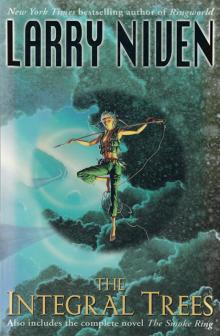 The Integral Trees - Omnibus
The Integral Trees - Omnibus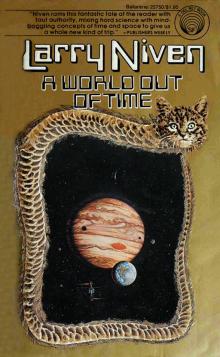 A World Out of Time
A World Out of Time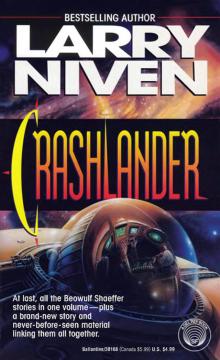 Crashlander
Crashlander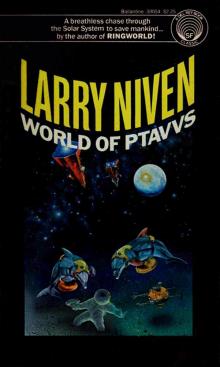 The World of Ptavvs
The World of Ptavvs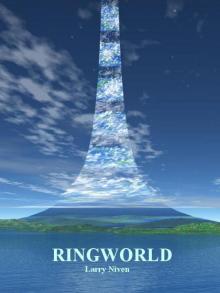 Ringworld
Ringworld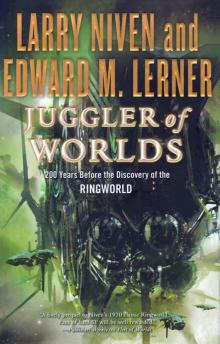 Juggler of Worlds
Juggler of Worlds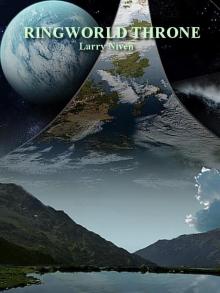 The Ringworld Throne
The Ringworld Throne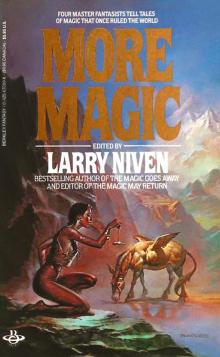 The Magic Goes Away Collection: The Magic Goes Away/The Magic May Return/More Magic
The Magic Goes Away Collection: The Magic Goes Away/The Magic May Return/More Magic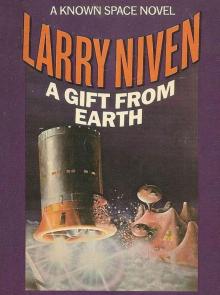 A Gift From Earth
A Gift From Earth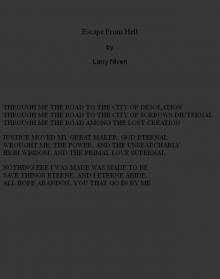 Escape From Hell
Escape From Hell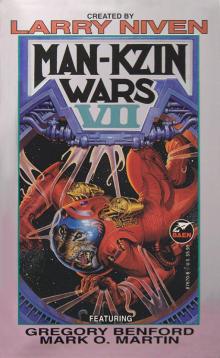 Larry Niven’s Man-Kzin Wars - VII
Larry Niven’s Man-Kzin Wars - VII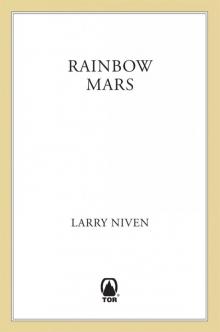 Rainbow Mars
Rainbow Mars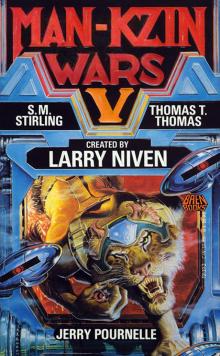 Larry Niven’s Man-Kzin Wars - V
Larry Niven’s Man-Kzin Wars - V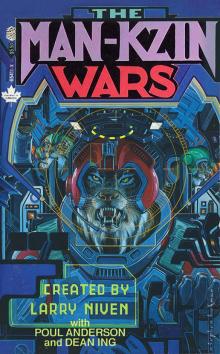 Larry Niven’s Man-Kzin Wars - I
Larry Niven’s Man-Kzin Wars - I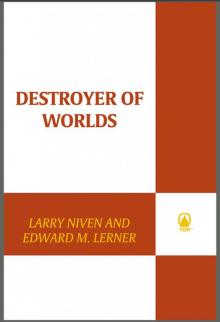 Destroyer of Worlds
Destroyer of Worlds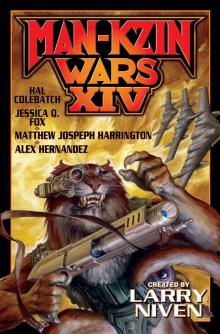 Man-Kzin Wars XIV
Man-Kzin Wars XIV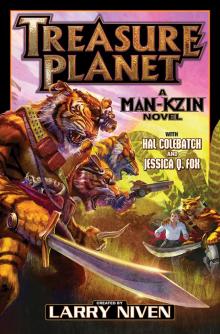 Treasure Planet
Treasure Planet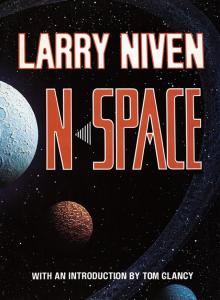 N-Space
N-Space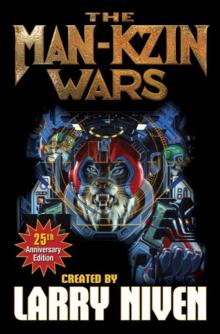 Man-Kzin Wars 25th Anniversary Edition
Man-Kzin Wars 25th Anniversary Edition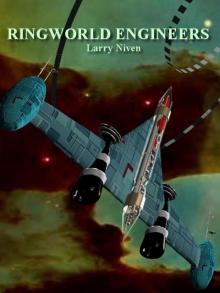 The Ringworld Engineers
The Ringworld Engineers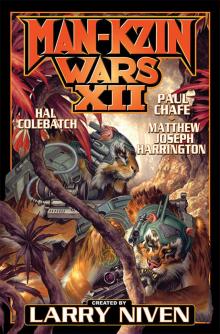 Larry Niven’s Man-Kzin Wars - XII
Larry Niven’s Man-Kzin Wars - XII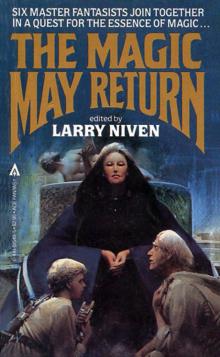 The Magic May Return
The Magic May Return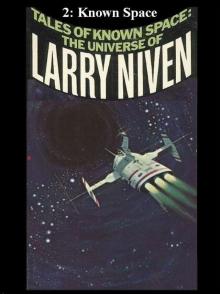 Tales of Known Space: The Universe of Larry Niven
Tales of Known Space: The Universe of Larry Niven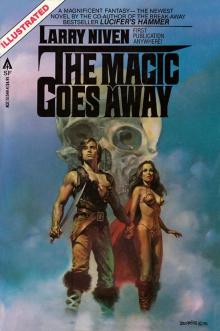 The Magic Goes Away
The Magic Goes Away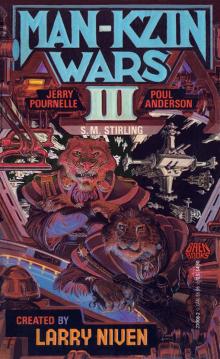 Larry Niven’s Man-Kzin Wars - III
Larry Niven’s Man-Kzin Wars - III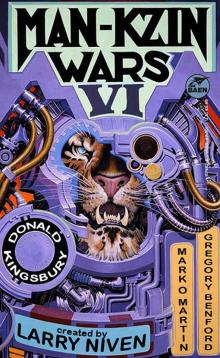 Larry Niven’s Man-Kzin Wars - VI
Larry Niven’s Man-Kzin Wars - VI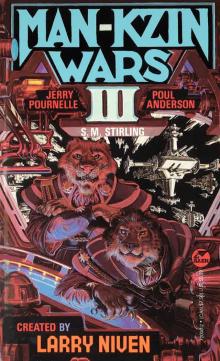 Man-Kzin Wars III
Man-Kzin Wars III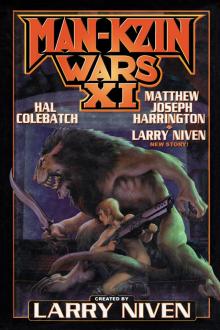 Larry Niven’s Man-Kzin Wars - XI
Larry Niven’s Man-Kzin Wars - XI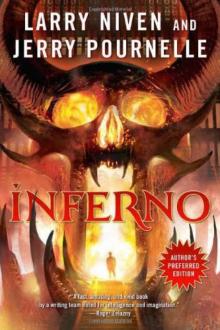 Inferno
Inferno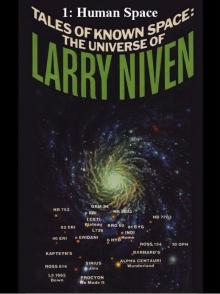 01-Human Space
01-Human Space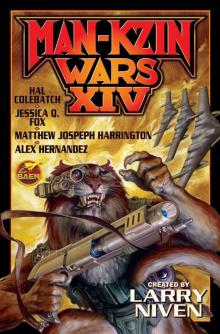 Larry Niven’s Man-Kzin Wars - XIV
Larry Niven’s Man-Kzin Wars - XIV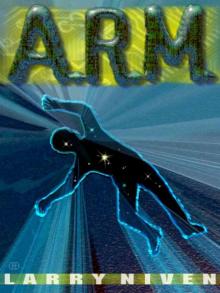 The Long Arm of Gil Hamilton
The Long Arm of Gil Hamilton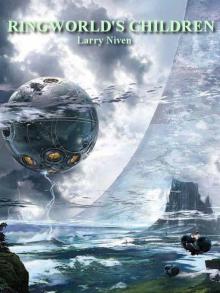 Ringworld's Children
Ringworld's Children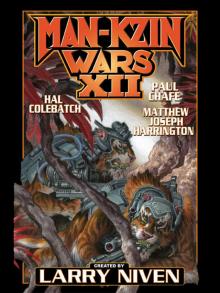 Man-Kzin Wars XII
Man-Kzin Wars XII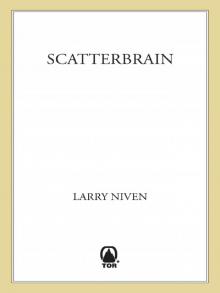 Scatterbrain
Scatterbrain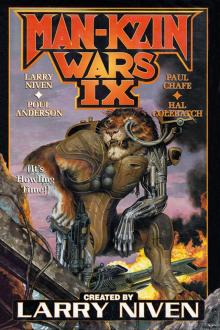 Man-Kzin Wars 9
Man-Kzin Wars 9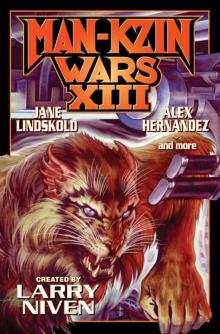 Man-Kzin Wars XIII
Man-Kzin Wars XIII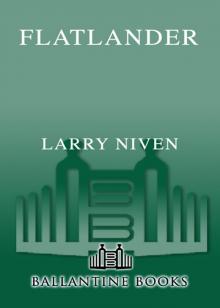 Flatlander
Flatlander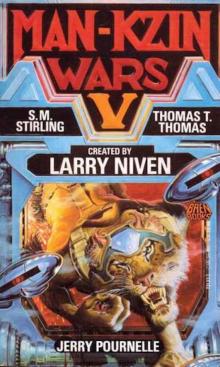 Man-Kzin Wars V
Man-Kzin Wars V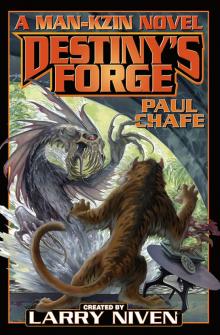 Destiny's Forge
Destiny's Forge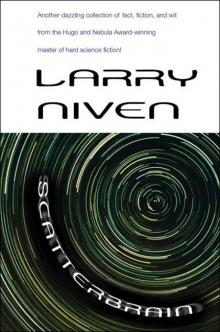 Scatterbrain (2003) SSC
Scatterbrain (2003) SSC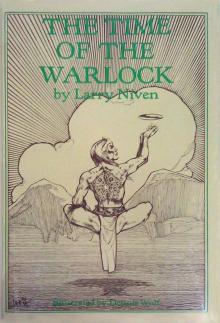 The Time of the Warlock
The Time of the Warlock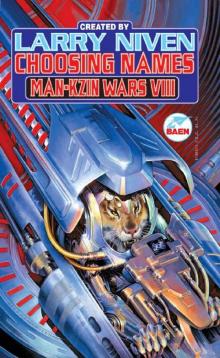 Choosing Names: Man-Kzin Wars VIII
Choosing Names: Man-Kzin Wars VIII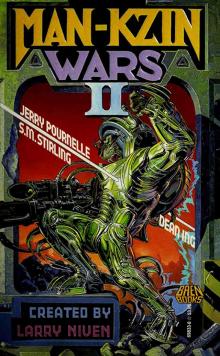 Larry Niven's Man-Kzin Wars II
Larry Niven's Man-Kzin Wars II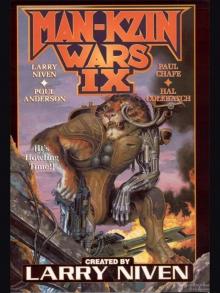 Man-Kzin Wars IX (Man-Kzin Wars Series Book 9)
Man-Kzin Wars IX (Man-Kzin Wars Series Book 9)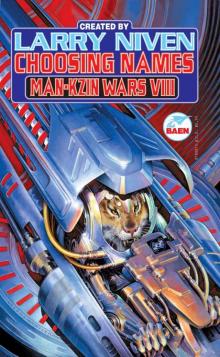 Choosing Names: Man-Kzin Wars VIII (Man-Kzin Wars Series Book 8)
Choosing Names: Man-Kzin Wars VIII (Man-Kzin Wars Series Book 8)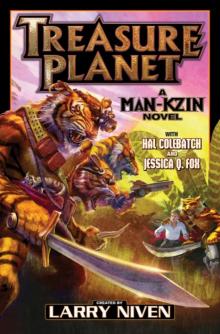 Treasure Planet - eARC
Treasure Planet - eARC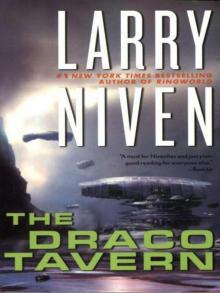 The Draco Tavern
The Draco Tavern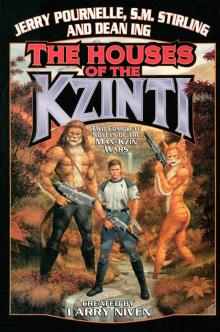 Larry Niven’s Man-Kzin Wars - The Houses of the Kzinti
Larry Niven’s Man-Kzin Wars - The Houses of the Kzinti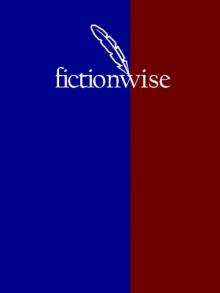 The Fourth Profession
The Fourth Profession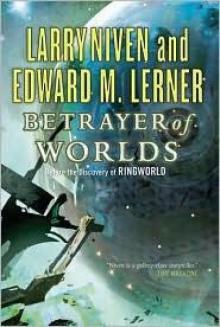 Betrayer of Worlds
Betrayer of Worlds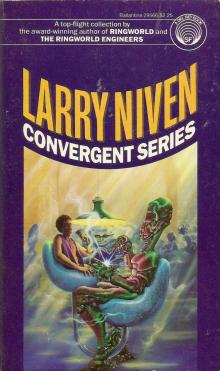 Convergent Series
Convergent Series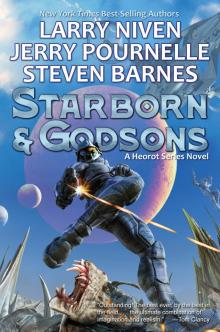 Starborn and Godsons
Starborn and Godsons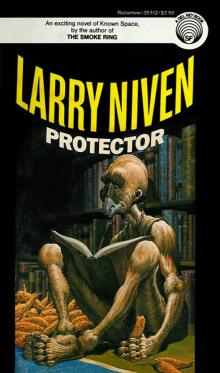 Protector
Protector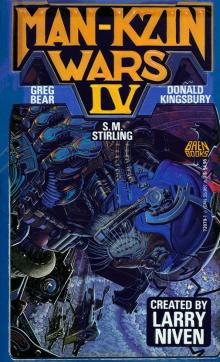 Larry Niven’s Man-Kzin Wars - IV
Larry Niven’s Man-Kzin Wars - IV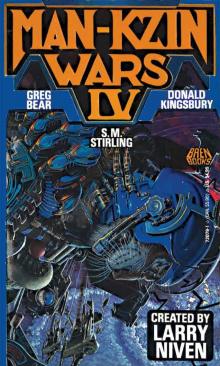 Man-Kzin Wars IV (Man-Kzin Wars Series Book 4)
Man-Kzin Wars IV (Man-Kzin Wars Series Book 4)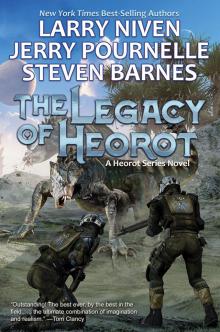 The Legacy of Heorot
The Legacy of Heorot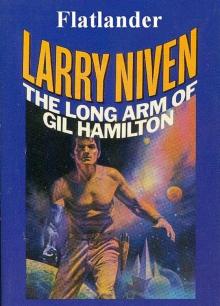 03-Flatlander
03-Flatlander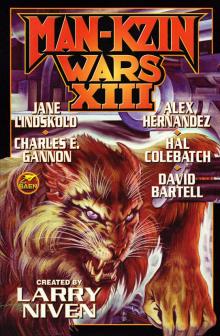 Larry Niven’s Man-Kzin Wars - XIII
Larry Niven’s Man-Kzin Wars - XIII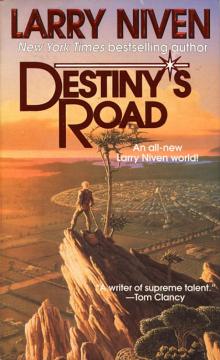 Destiny's Road
Destiny's Road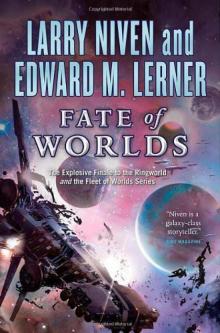 Fate of Worlds
Fate of Worlds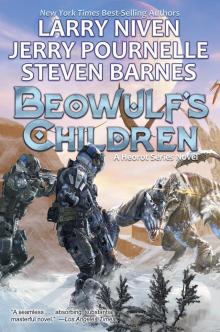 Beowulf's Children
Beowulf's Children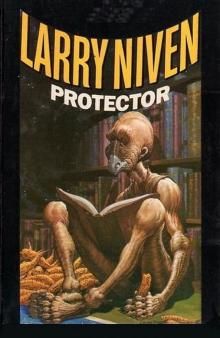 04-Protector
04-Protector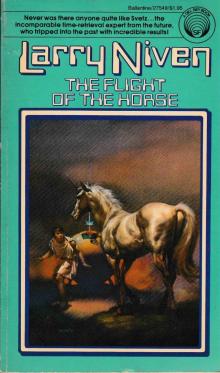 The Flight of the Horse
The Flight of the Horse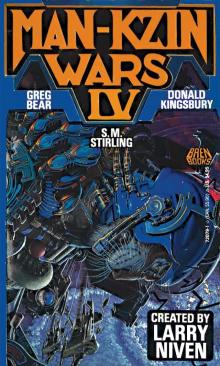 Man-Kzin Wars IV
Man-Kzin Wars IV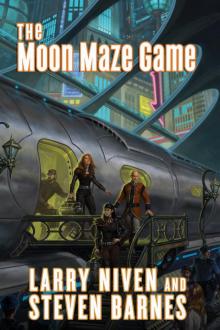 The Moon Maze Game dp-4
The Moon Maze Game dp-4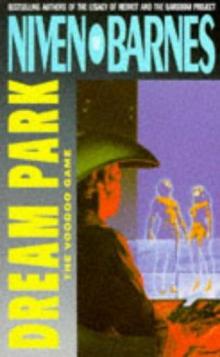 The California Voodoo Game dp-3
The California Voodoo Game dp-3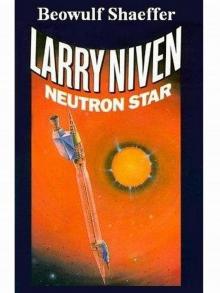 07-Beowulf Shaeffer
07-Beowulf Shaeffer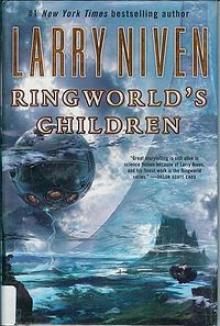 Ringworld's Children r-4
Ringworld's Children r-4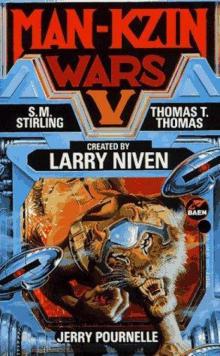 The Man-Kzin Wars 05
The Man-Kzin Wars 05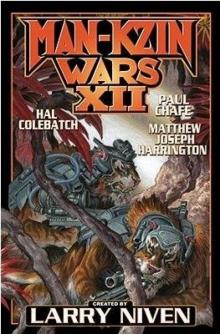 The Man-Kzin Wars 12
The Man-Kzin Wars 12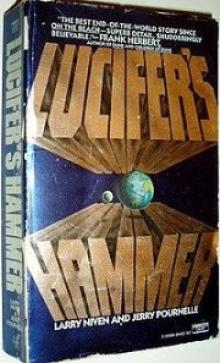 Lucifer's Hammer
Lucifer's Hammer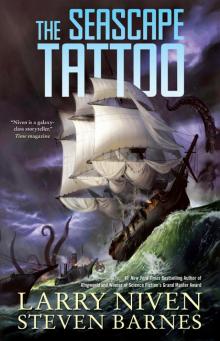 The Seascape Tattoo
The Seascape Tattoo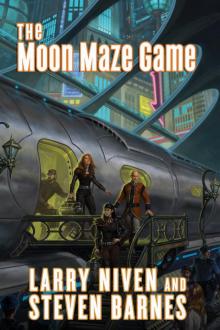 The Moon Maze Game
The Moon Maze Game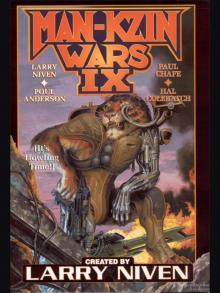 Man-Kzin Wars IX
Man-Kzin Wars IX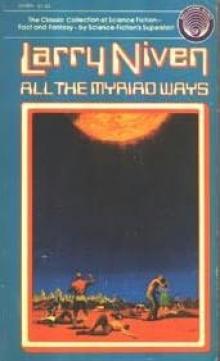 All The Myriad Ways
All The Myriad Ways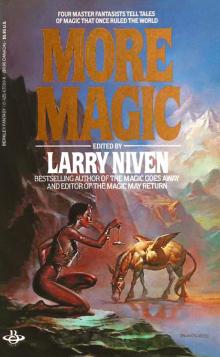 More Magic
More Magic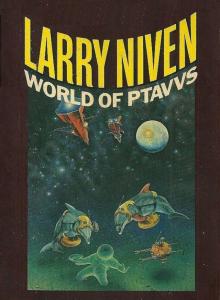 02-World of Ptavvs
02-World of Ptavvs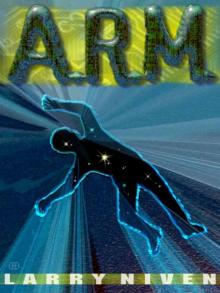 ARM
ARM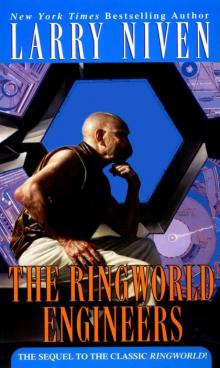 The Ringworld Engineers (ringworld)
The Ringworld Engineers (ringworld)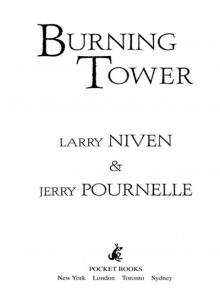 Burning Tower
Burning Tower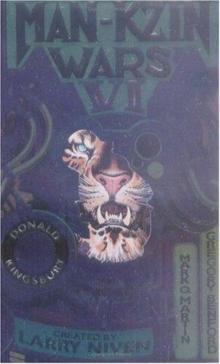 The Man-Kzin Wars 06
The Man-Kzin Wars 06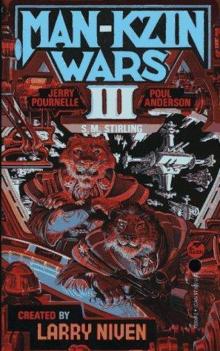 The Man-Kzin Wars 03
The Man-Kzin Wars 03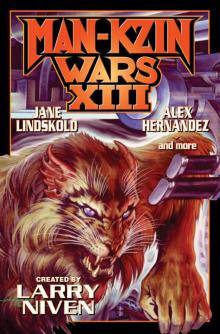 Man-Kzin Wars XIII-ARC
Man-Kzin Wars XIII-ARC The Hole Man
The Hole Man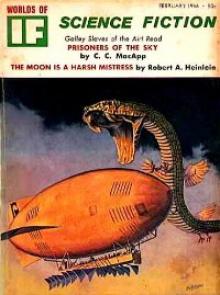 The Warriors mw-1
The Warriors mw-1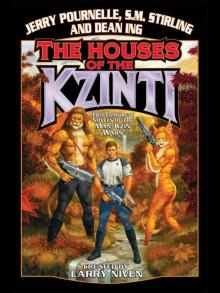 The Houses of the Kzinti
The Houses of the Kzinti The Man-Kzin Wars 07
The Man-Kzin Wars 07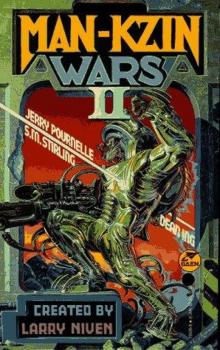 The Man-Kzin Wars 02
The Man-Kzin Wars 02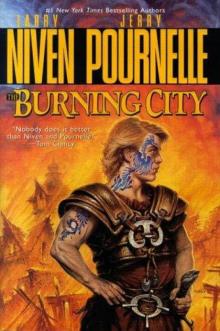 The Burning City
The Burning City At the Core
At the Core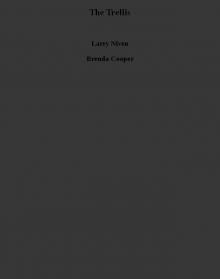 The Trellis
The Trellis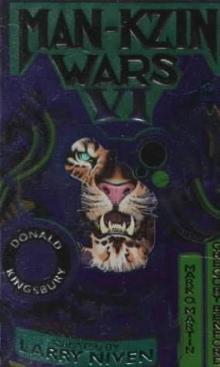 The Man-Kzin Wars 01 mw-1
The Man-Kzin Wars 01 mw-1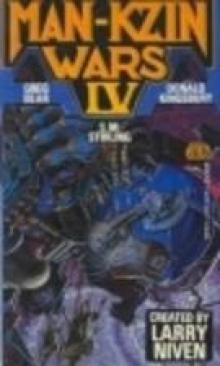 The Man-Kzin Wars 04
The Man-Kzin Wars 04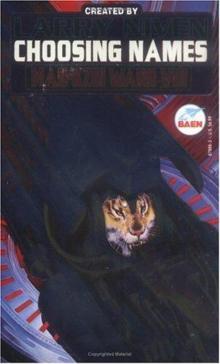 The Man-Kzin Wars 08 - Choosing Names
The Man-Kzin Wars 08 - Choosing Names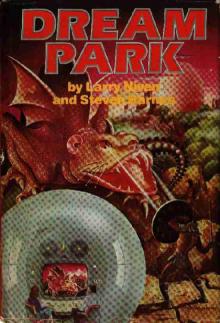 Dream Park
Dream Park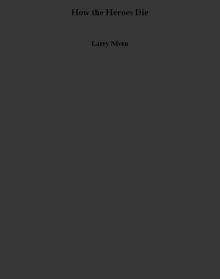 How the Heroes Die
How the Heroes Die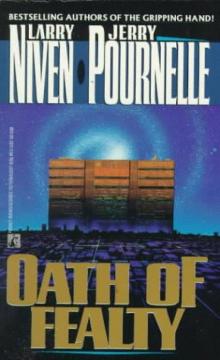 Oath of Fealty
Oath of Fealty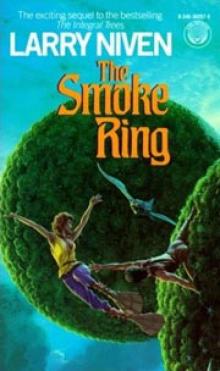 The Smoke Ring t-2
The Smoke Ring t-2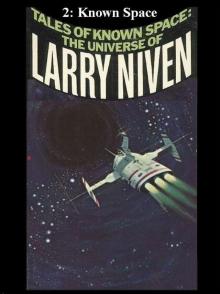 06-Known Space
06-Known Space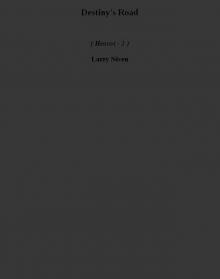 Destiny's Road h-3
Destiny's Road h-3 Flash crowd
Flash crowd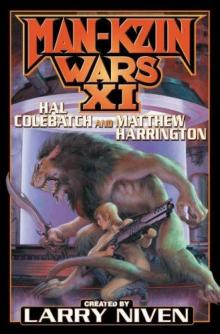 The Man-Kzin Wars 11
The Man-Kzin Wars 11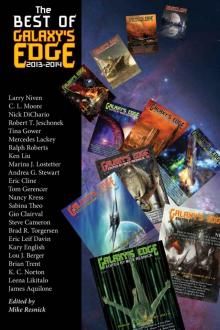 The Best of Galaxy’s Edge 2013-2014
The Best of Galaxy’s Edge 2013-2014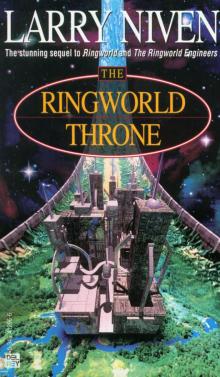 The Ringworld Throne r-3
The Ringworld Throne r-3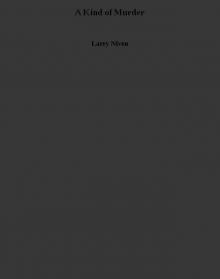 A Kind of Murder
A Kind of Murder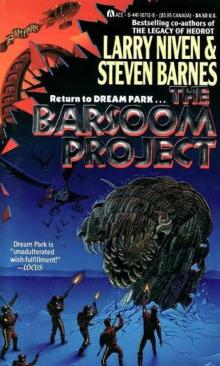 The Barsoom Project dp-2
The Barsoom Project dp-2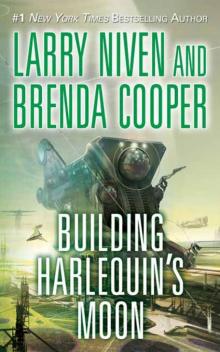 Building Harlequin’s Moon
Building Harlequin’s Moon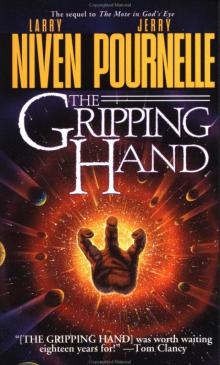 The Gripping Hand
The Gripping Hand The Leagacy of Heorot
The Leagacy of Heorot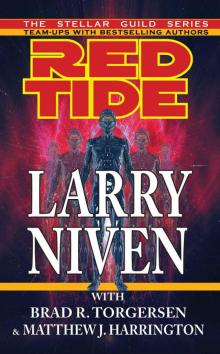 Red Tide
Red Tide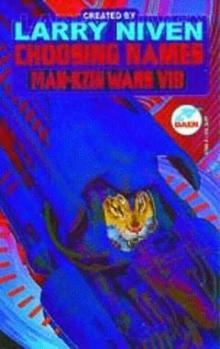 Choosing Names mw-8
Choosing Names mw-8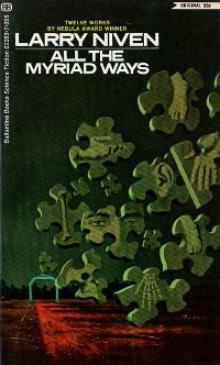 Inconstant Moon
Inconstant Moon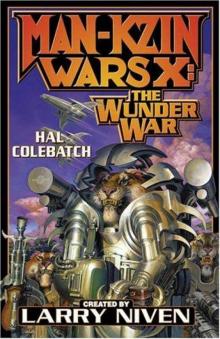 The Man-Kzin Wars 10 - The Wunder War
The Man-Kzin Wars 10 - The Wunder War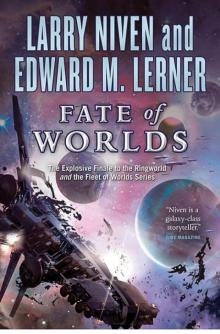 Fate of Worlds: Return From the Ringworld
Fate of Worlds: Return From the Ringworld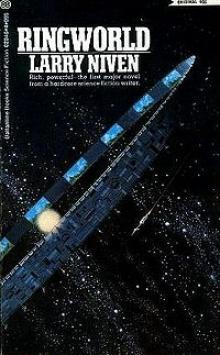 Ringworld r-1
Ringworld r-1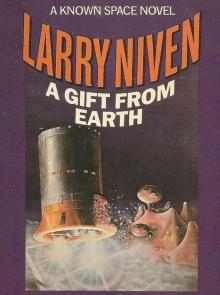 05-A Gift From Earth
05-A Gift From Earth The Integral Trees t-1
The Integral Trees t-1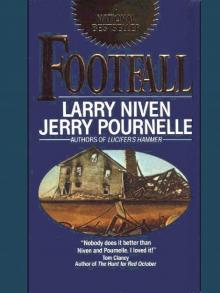 Footfall
Footfall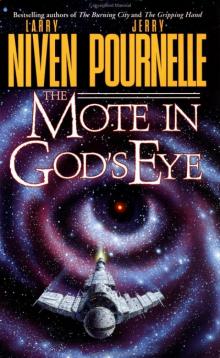 The Mote In God's Eye
The Mote In God's Eye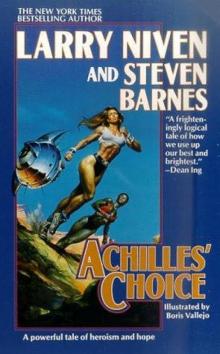 Achilles choice
Achilles choice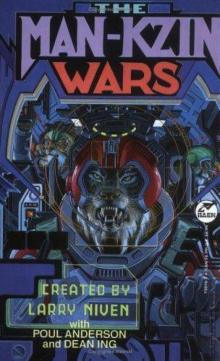 The Man-Kzin Wars 01
The Man-Kzin Wars 01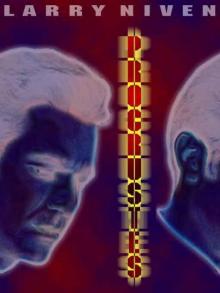 Procrustes
Procrustes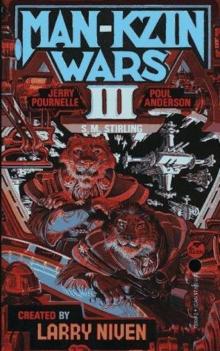 The Man-Kzin Wars 03 mw-3
The Man-Kzin Wars 03 mw-3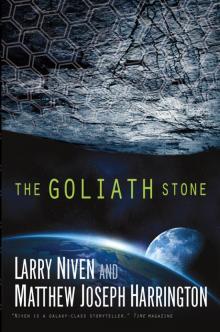 The Goliath Stone
The Goliath Stone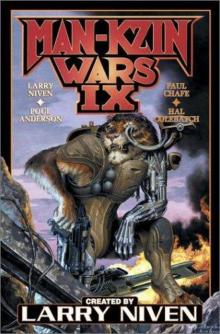 The Man-Kzin Wars 09
The Man-Kzin Wars 09